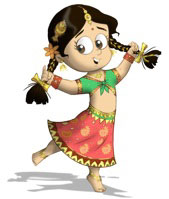Current affairs holds the key

K_Murali KumarGET YOUR BASICS RIGHT: The candidates who score more than 300 in the General Studies papers are those with excellent understanding of the subjects at the secondary and higher secondary school level. Photo: K Murali Kumar
Comprehensive study of topics plus being up-to-date with events of the day are crucial to cracking the Civil Services Main exam, say experts.
The Civil Services (Main) Examination 2011 is just a few weeks away. Over the years, there has been a rise in preparation awareness among civil service aspirants, but this coveted exam continues to throw a surprise element calling for newer strategies.
The question papers in recent years have clearly shown that the Union Public Service Commission (UPSC) seems to be determined to select those aspirants who are able to cover most of the topics in the syllabus with focus on current affairs.
The number of questions in the General Studies question papers has been doubled from 30 to 60, says P.S. Ravindran, director, Vajiram and Ravi Institute for IAS Examination, New Delhi. “As UPSC covers a large number of areas, General Studies preparation should be comprehensive,” he says. He stressed the need to score more than 320 marks in both the optional subjects as scoring in the General Studies has become more challenging.
A sizeable number of candidates in the previous mains examination were not able to score more than 270 out of 600 in the General Studies papers.
Many questions pertaining to current affairs of the month of October 2010 were unexpected and candidates found it tough to handle them in the previous mains.
Aspirants who were able to read at least two broadsheet newspapers such as The Hindu regularly were able to answer those questions. “Reading of two newspapers and Frontline is necessary. Questions based on less prominent news is also being asked,” says Mr. Ravindran.
Instead of reading several study materials, candidates are advised to select two source materials and concentrate on that with four rounds of quick revision.
A thorough preparation of topics covered in statistics and Indian Economy is crucial for a high score. The questions would cover Indian economy and issues relating to planning, mobilisation of resources, growth, development and employment.
Issues arising from the social and economic exclusion of large sections from the benefits of development, economic and trade issues such as foreign trade, foreign investment, economic and diplomacy issues relating to oil, gas and energy flows, the role and functions of IMF, World Bank and WTO which influence India's economic interaction with other countries and international institutions are important.
The candidates who score more than 300 in the General Studies papers are those with excellent understanding of the subjects at the secondary and higher secondary school level. They do not require any specialised study in any of the subjects for the General Studies. NCERT books of history, geography, polity, economy and statistics continue to be useful for revising the syllabus for the main examination.
IGNOU materials on optional subjects could be used for understanding the basic concepts for the General Studies and the optional subjects.
The Civil Services Aptitude Test (CSAT) this year had 14 questions on current affairs of May 2011. Over 70 questions in the CSAT were related to current affairs. This trend is likely to continue in the civil services main examination too.
“Many first-timers have cleared the prelims. So presentation of answers will be more important,” says Ganesa Subramanian, Director, Ganesh's IAS. Questions pertaining to the celebration of the 150 years of existence of the Comptroller and Auditor General of India, diamond jubilee celebrations of the Election Commission of India, Union Budget, Constituent Assembly and Reserve Bank of India may be of significance, he says.
Current affairs based on newspaper reports from September 2010 to October 2011 are the key areas. The candidates should be able to think and formulate views based on their subject knowledge based primarily on NCERT material.
Last year, questions on news covered in the period between October 1 and 15 took candidates by surprise.
More surprises may be in store for them this year. UPSC is expected to continue testing the analytical mindset of candidates in this main exam too. Environment, ecology, biodiversity and climate change may be prominent areas.
Reading editorials of newspapers has been found helpful for Essay paper and for answering questions on polity and social issues. Economic Survey and publications such as Yojana may be useful. Lok Sabha channel debates may throw light on social issues. Weekly group discussions or joint study with other candidates would enrich the understanding of key areas.





